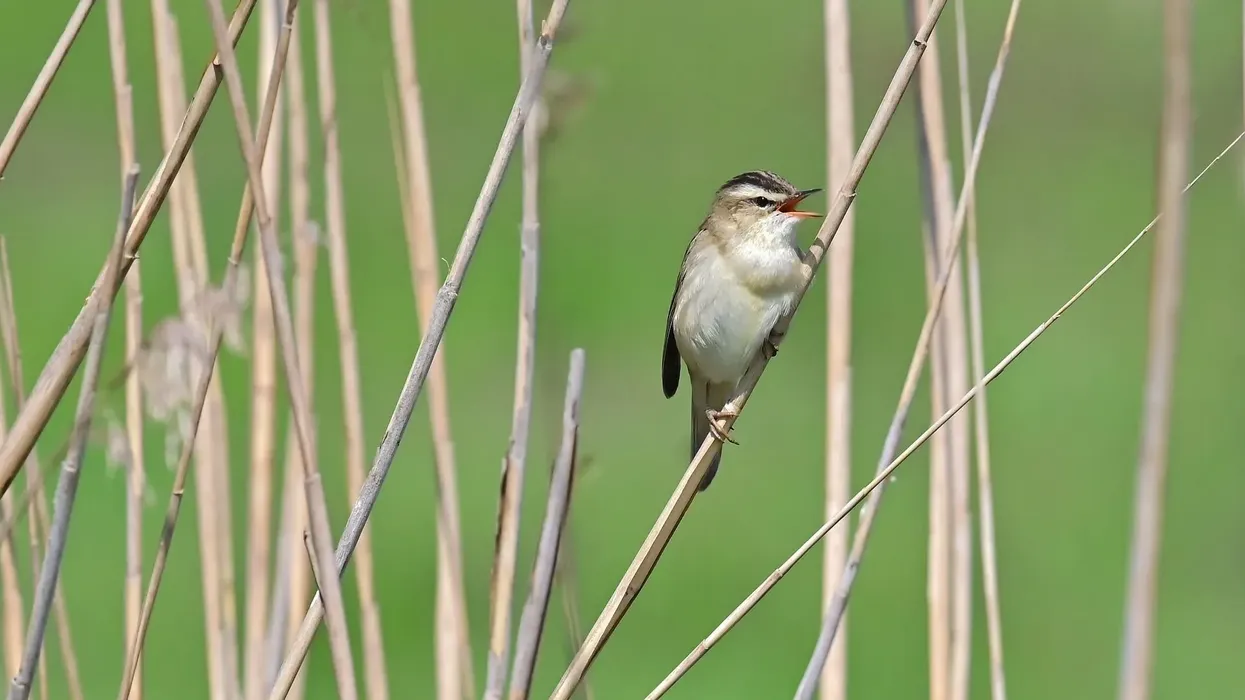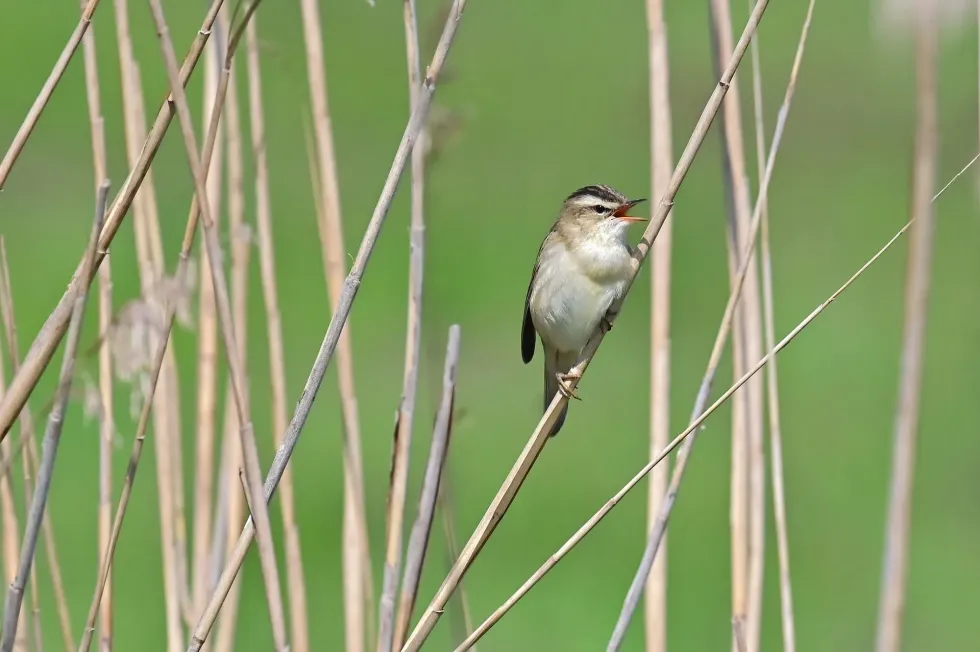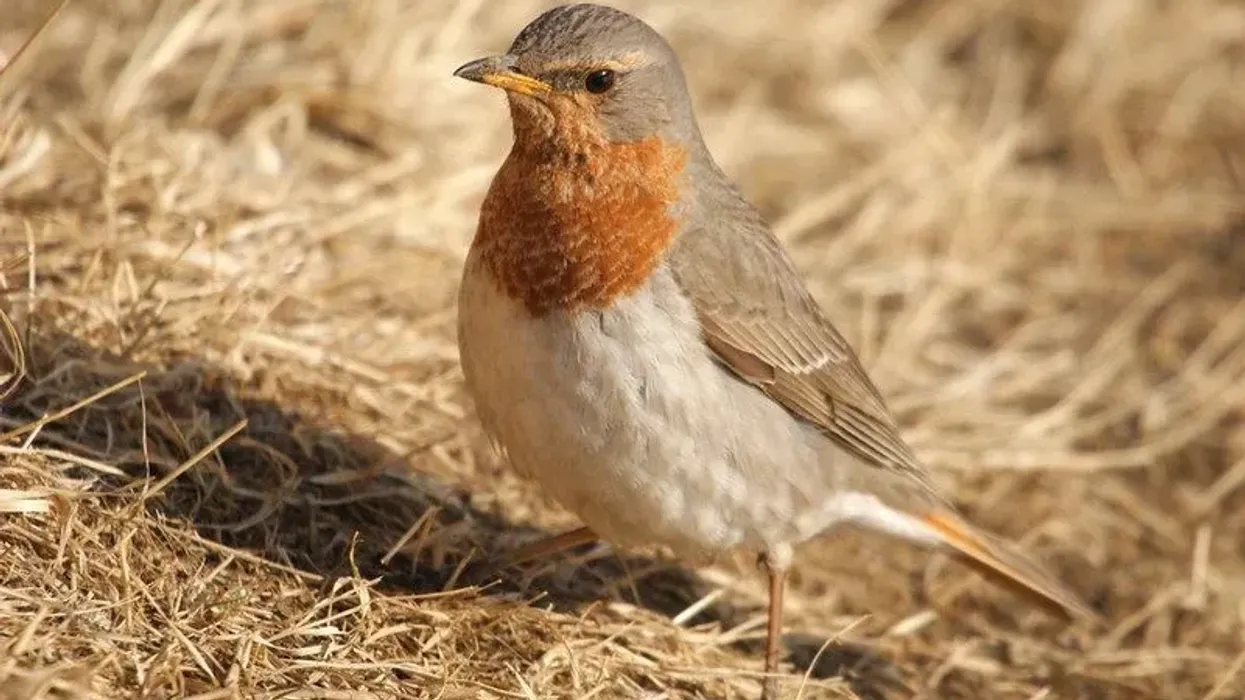The sedge warbler (scientific name Acrocephalus schoenobaenus) is a medium-sized bird that is best known for singing during the breeding season. The sedge warbler call is a fascinating thing to study.
These feathery composers show off their musical talent to stand out as mating prospects. The male sedge warbler with the most complex and random composition has the best chance to mate.
They show off their musical talent at the breeding grounds where they are trying to impress their potential mates. These birds are migratory and all these birds spend the winter season in sub-Saharan Africa. The British sedge warblers can later be found in southwest Iberia to Italy.
In central Europe and Italy, warblers from Sweden can be recovered. These birds have brown plumage with a streaked brown back and wings.
They have a flattened head and their crown is also streaked with black. Keep reading to know more about this amazing bird.
Read on to learn more about the sedge warbler. If you enjoy reading this article, check out the bee-eater and cockatoo.
Sedge Warbler Interesting Facts
What type of animal is a sedge warbler?
The sedge warbler (Acrocephalus schoenobaenus) is a type of bird that is considered to be an old-world warbler.
What class of animal does a sedge warbler belong to?
The sedge warbler (Acrocephalus schoenobaenus) belongs to the class Aves, along with other species of birds. The sedge warbler is also part of the order Passeriformes and the family Acrocephalidae.
How many sedge warblers are there in the world?
There are no exact estimates of this bird's population. Based on the observations of the IUCN (International Union for Conservation of Nature), the sedge warbler is listed as Least Concern. It is reasonable to assume that their population is relatively stable and is under no imminent threat of extinction. The rough range of their population spans between 12,000,000-21,999,999 birds.
Where does a sedge warbler live?
The sedge warbler range is extensive, to say the least. It has a global population of between 8.8-15 million birds in Europe. This bird can be found across western and central Asia and Europe.
These birds undertake migration after breeding. The British sedge warbler migration takes place across Southern Europe and the Sahara in the months of August and September. The warblers winter in sub-Saharan Africa.
What is a sedge warbler's habitat?
The sedge warbler's habitat usually includes moist and cool conditions like wetland habitats. During the breeding time, they can also be found in various habitats like reedbeds, ditches, and near crops like arable crops and stinging nettles.
Who do sedge warblers live with?
The sedge warbler lives in flocks with other birds of the species. The proximity of the birds reduces during the breeding season.
How long does a sedge warbler live?
Over many observational studies, it has been noted that the sedge warbler's typical lifespan is about two years. However, there may be drastic variance depending on many factors. In fact, the oldest sedge warbler lived up to the age of 10 years in Finland.
How do they reproduce?
After arriving at the nesting grounds, during the breeding season, the males start singing from exposed reeds and branches. The songs are accompanied by various performances like song flights which are meant to attract potential mates.
Once the mate has been found, the singing stops. The territory is defended by the males and the sedge warbler nest is built by the females. The cup-shaped nest is made using stems, leaves, grass, and sometimes animal hair.
About three to five eggs are laid in the nest. Sedge warbler eggs are brown-mottled to greenish-yellow in color. The incubation period is about 14 days and is undertaken by the females.
The hatchlings however are cared for by both the parents. The young ones fledge after about 13-14 days.
What is their conservation status?
According to the IUCN Red List of Threatened Species, the sedge warbler (scientific name - Acrocephalus schoenobaenus) species is listed as Least Concern. Their population is deemed stable. Despite this, there are indicators that this bird may face serious threats from ecological challenges like the expansion of the Sahara desert and the destruction of their wetland habitats.
Sedge Warbler Fun Facts
What do sedge warblers look like?
The sedge warbler (Acrocephalus schoenobaenus) is a medium-sized bird. It has brown plumage, pale underparts and its back and wings are also streaked with brown. The wings are dull in color and the rump is a shade of warm brown.
It has a strong bill that is pointed along with a crown that has black streaks. Young warblers have dark spots on their breast. These dark spots make them resemble aquatic warblers but they shouldn't be confused with them.
How cute are they?
If you get a chance to play a sedge warbler song to yourself, you would know how cute the birds are. The sedge warbler music and the context behind their songs make them a romantic species to admire.
Perhaps if you find yourself in the Africa savannah you will get to experience how an African sedge warbler sings for yourself.
How do they communicate?
Just after arriving on the nesting grounds, the male sedge warblers begin singing on reedbeds or exposed stems. This singing can also be accompanied by song flights that are performed to attract a mate.
Besides this, their alarm call sounds like a hard 'check'. These are repeated quickly and the sedge warbler sound resembles a rattling alarm call. Their anxious call is a rolling 'rrrr'.
Mostly, the sedge warbler communicates while sitting on branches or reed. The sedge warbler song varies a lot in tempo and is not evenly paced and rhythmic as the reed warbler song.
How big is a sedge warbler?
This medium-sized brown old-world bird has a length of about 4.5-5.1 in (11.5-13 cm) long. It has a brown and compact body. The sedge warbler is smaller in size than the reed warbler, which has a length of 6.3-8.3 in (16-21 cm). Compared to other birds, it is much shorter than a palm cockatoo.
How fast can a sedge warbler fly?
There are no exact estimates of the flying speed of the great sedge warbler. Knowing that these old-world bird species migrate over long distances (the Britsh sedge warbler migration), it is obvious that these birds are adept flyers.
How much does a sedge warbler weigh?
An adult sedge warbler is extremely light in weight and has a weight of only about 0.4 oz (12 g). It weighs almost the same as a chipping sparrow.
What are the male and female names of the species?
There are no unique names given to the male and female of the sedge warbler species.
What would you call a baby sedge warbler?
Much like the babies of any other bird, sedge warbler babies can be referred to as hatchlings, nestlings, or chicks.
What do they eat?
The range of sedge warbler is an omnivorous bird which means it both eats meat and plants. Sedge warblers prey on mayflies, bugs, moths, dragonflies, damselflies, and grasshoppers. As for plants they consume berries in general including elderberries and blackberries. They may employ techniques like picking or leap-catching to hunt their prey.
Are they poisonous?
No, the sedge warbler is not poisonous.
Would they make a good pet?
There aren't enough resources that describe the range of sedge warbler species as a pet. It may not be a smart idea to keep them as pets considering little to no information on how to care for them. It is best if these birds are left in the wild.
Did you know...
The male and the female warbler have an identical plumage but can be differentiated on the basis of their cloacal protuberance or brood patch.
The more the phrases in the sedge warbler's song, the higher the number of potential mates that get attracted.
This bird species never sings the same song twice and adds random phrases into the song.
The smallest warbler species is Lucy's warbler which has a weight of 0.2 oz (6.5 g) and a length of 3.5-4.7 in (9-12 cm).
The sedge warbler is very closely related to the Aquatic warbler. But the latter breeds in marshes in countries like Russia and Poland.
The sedge warbler song may include some mimicry phrases as well as sweet phrases.
Do sedge warblers migrate?
Yes, the range of sedge warbler species does migrate. It breeds in western Eurasia and spends the winter in the south of the Sahara, Africa. The British sedge warblers migrate to West Africa. For this long-distance migration, especially during the winter season, the birds accumulate large deposits of body fat after breeding.
How did sedge warblers get their name?
The range of bird species, belonging to the same family as the reed warbler, was first described by a Swedish naturalist named Carl Linnaeus in 1758. This bird was described under the binomial name of Motacilla schoenobaenus.
It later got introduced into the genus Acrocephalus by Johann Andreas Naumann and Johann Friedrich Naumann. The name of the genus Acrocephalus comes from ancient Greek meaning 'akros' - highest and 'kephale' - head. The Naumanns might have named them so because they thought that akros meant 'sharp-pointed'.
Here at Kidadl, we have carefully created lots of interesting family-friendly animal facts for everyone to discover! For more relatable content, check out these palm warbler facts and hummingbird facts for kids.
You can even occupy yourself at









